Planning a trip to the Philippines? Sure it has amazing beaches and incredible islands but also Filipino food is one of the most underrated in South East Asia. Don’t visit without this list!
I lived in Cebu for nine months in 1999 and I still remember all the fantastic food I ate.
Much of it I had never seen before, it was so different from my small town in Canada.
That trip changed my life.
Since then I’ve been back several times and the more I eat the more I learn.
And although Southeast Asian food is known throughout the world, few talk about food in the Philippines. Instead Thailand is in the spotlight with Vietnam running a close second.
Yet Filipino food deserves credit for its gastronomy.
It is a country that is spread over 7,000 islands with vast coastlines, jungles and mountains. It has a population of over 100 million people – some of the nicest in the world.
Naturally there are geographic variations in Filipino cuisine, but its long history has brought people from around the world.
And perhaps surprisingly, in many cases I see similarities between Filipino food and Latin American, especially some Cuban food.
Influences on Filipino Food
Because of the diversity in the population of the Philippines, you can find a range of different culinary styles present in the country.
With both a significant Japanese-Filipino and Chinese-Filipino population, you can see how traditional dishes have evolved.
One of its biggest culinary influences is from Spain. The country was under Spanish rule for several centuries.
Spain left long ago but its culinary footprint remains with paellas, stews, and so many Filipino desserts.
The United States stepped in to help liberate the Philippines, and it became its new ruler for 50 years until 1946. It was long before fast food was invented in America.
But when I was in the Philippines I couldn’t help but remark how locals were fascinated with American culture.
And yet they did not realize their food was better. McDonald’s was a mainstay but cannot hold a candle to the delicious Filipino chain Jollibee.
Finally don’t forget about Muslim food in the Philippines, which is influenced by the proximity of Indonesia and traders from Arab countries.
Traditional Food in the Philippines
Hopia
Also often known as bakpia, these small pastries are made with a flaky dough. The fillings for these can be both sweet and savory.
Probably the most distinctive of the hopia fillings is a sweet mung-bean filling. But my favourite was ube filled pastries. Ube is a local variety of purple yam.
The most common savoury filling for hopia is usually pork. Although there are many other varieties available, in my opinion not as good.
The pastry dough is rolled quite thin, and then wrapped around a thicker layer of the filling before cooking.
Lechón
Another dish that has a Spanish origin, lechón is effectively a whole roasted suckling pig. Not surprisingly, iit is generally a dish reserved for festivals and special occasions.
The traditional method of cooking lechón is on a spit that is turned and basted over charcoal for several hours.
In the Manila region it is simply seasoned. The meat is generally served with a meaty, savoury sauce made with onions, vinegar, brown sugar and mashed liver.
But in the Cebu region it has a much stronger seasoning including scallions, lemongrass, bay leaves, garlic and also citrus leaves. I like this version the best because it’s fragrant and lighter.
Bistek Tagalog
One of the great examples of allowing good ingredients to shine. This is a dish that is simply made with beef steak and onions.
The beef is sliced thinly and is combined with sliced onions. It is fried with soy sauce and lemon juice.
Sometimes the sauce will also include a little garlic, and the pieces of steak and onions are then transferred into a bowl, or onto rice.
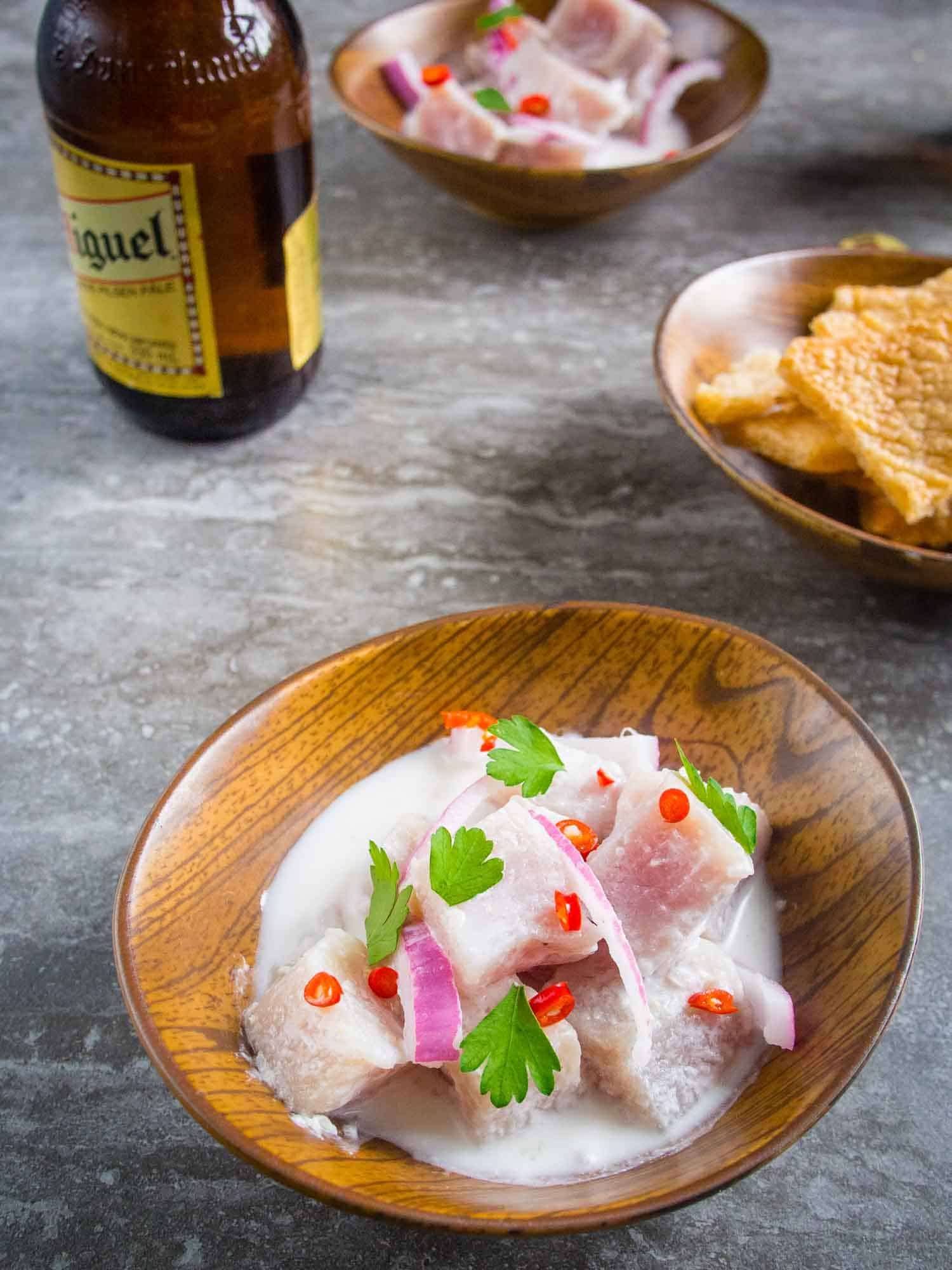
Kinilaw
People who have travelled to South America will be familiar with ceviche. Kinilaw is the Filipino equivalent that is prepared in a very similar, yet different way.
Kinilaw Recipe
Instead of marinating fish in lime juice. Kinilaw is “cooked” in cane vinegar or coconut vinegar.
Fish is simply prepared, cut into chunks and tossed in the marinade along with onion and chili pepper.
The most commonly used fish are mackerel, marlin, milkfish or yellowfin tuna. But really any fish or shellfish can be used. Each household and restaurant has its own recipe as well, but coastal towns like Oslob do it best as they have the freshest seafood.
In the north of the country, kinilaw can also be prepared with meat and is known as kilawin. But in these varieties of the dish the meat is cooked before being placed in the vinegar.
Bibingka
A Filipino food for Christmas, these are baked rice cakes that are one of the most common things to eat in South Cebu.
Bibingka is eaten for breakfast and it is hearty! Dough is made by grinding glutinous rice into a paste and combining this with coconut milk and water.
Dough is separately into individual containers lined with a banana leaf then baked in the oven.
These cakes are most commonly topped with butter, soft cheese, sugar or grated coconut. But there are also regional variations with different toppings.
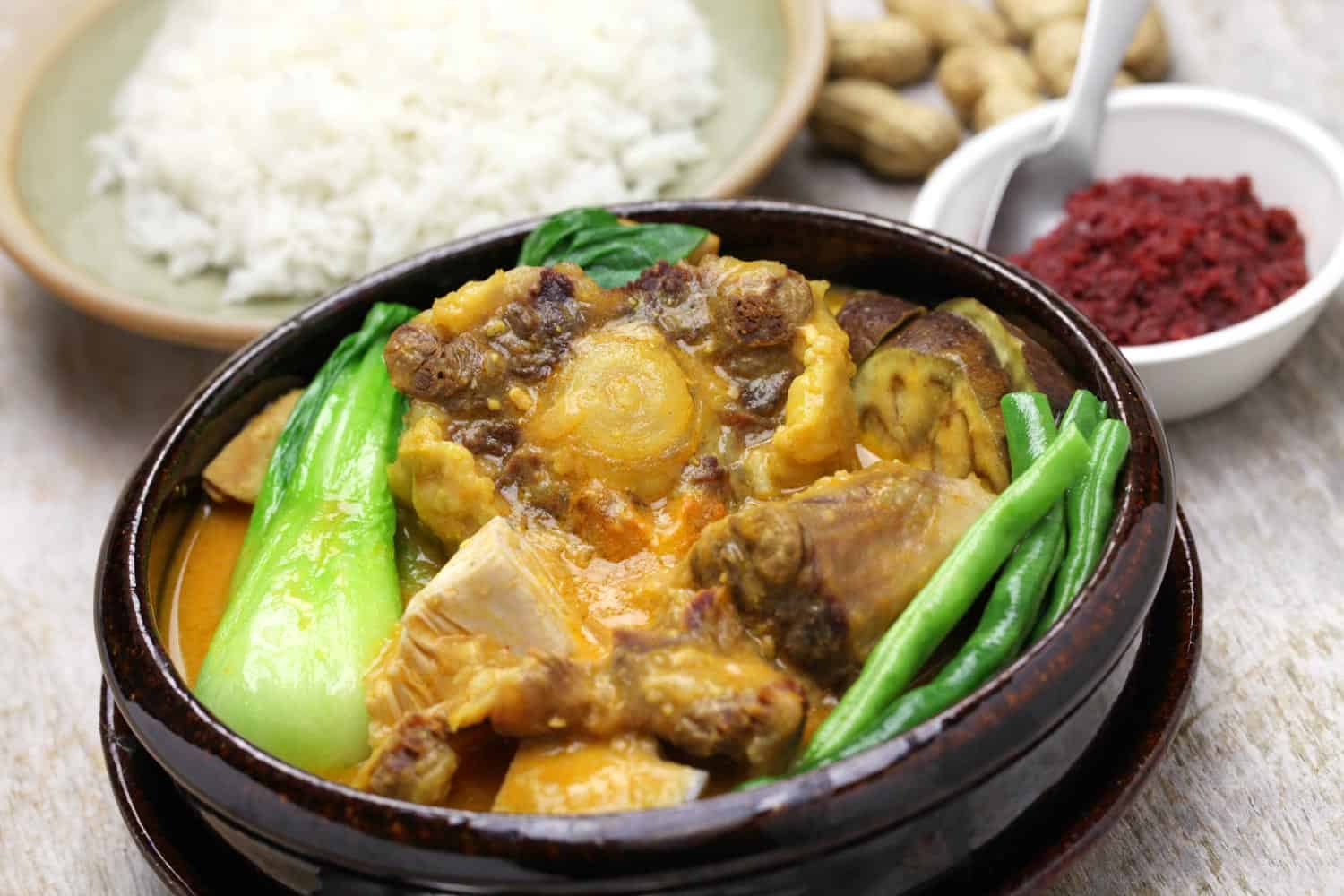
Kare-kare
A smaller yet noticeable influence on Filipino food comes from Indian Filipinos.
This dish appears to reflect that as the origin of the name is believed to be from the word curry.
Filipino Fruits
A distinctive stew that is found many parts of the country, the base of the sauce is made with ground roasted peanuts with annatto adding to the flavour and colour of the stew.
It was historically prepared with the less popular cuts of meat such as oxtail, pork hock or even pigs feet and calves feet. These actually are the most delicious.
There are also vegetarian and seafood varieties found in some areas.
Kare kare usually includes Chinese cabbage, green beans or other vegetables.
Adobo
Without a doubt, adobo is one of the most common foods in the Philippines. The name comes from the Spanish word that can mean marinade or sauce.
The key ingredient in adobo dishes is the sauce, which is usually a combination of local vinegar, soy sauce, black peppercorns and bay leaves.
Chicken, beef or pork is a common ingredient. But also there are seafood versions, with catfish, squid or cuttlefish.
Whatever the protein, adobo dishes often include vegetables such as eggplant, green beans or water spinach.
And of course is it served with white rice.
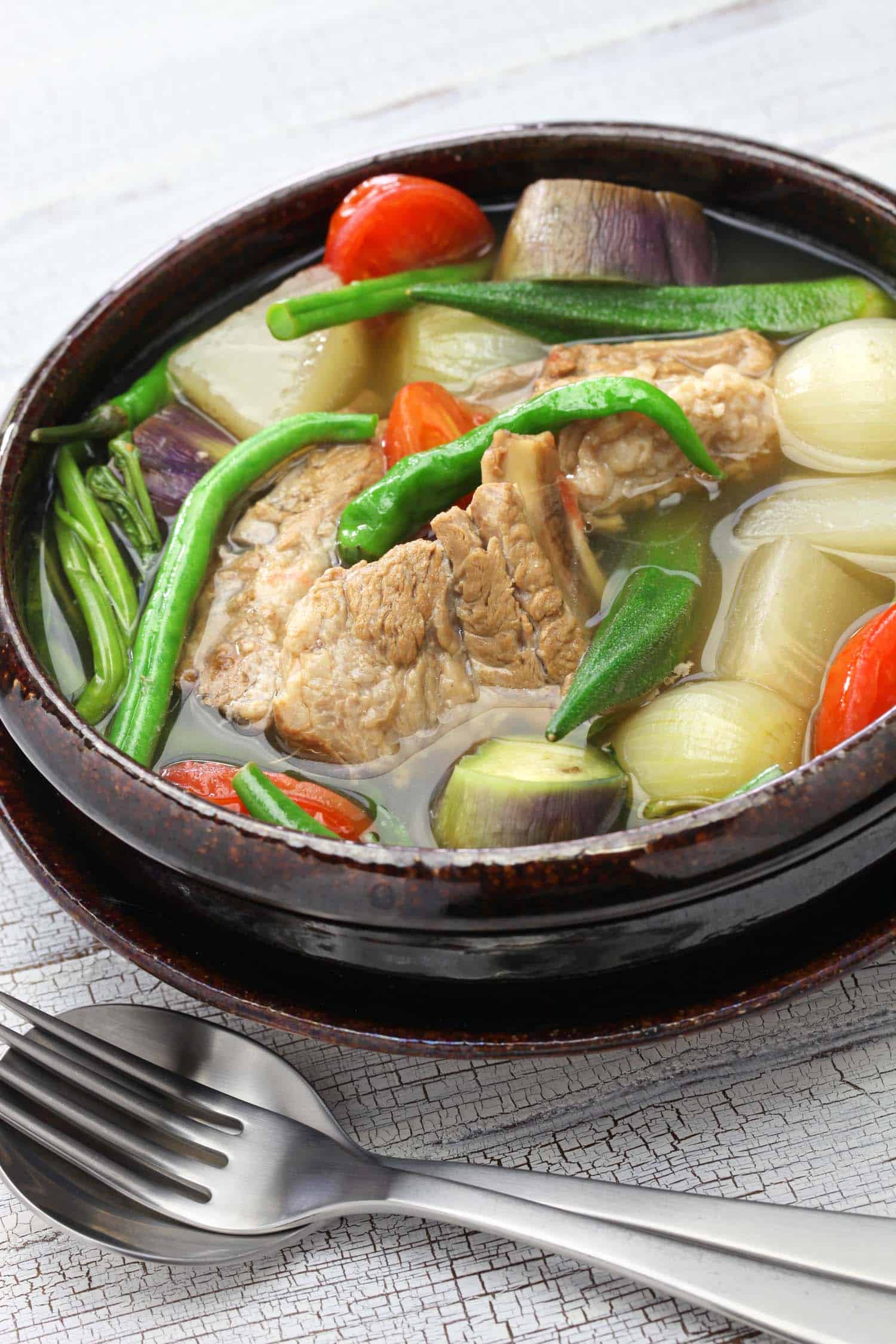
Sinigang
Sinigang literally translates as stew. It can refer to almost any type of dish where the ingredients have been stewed in a slightly sour broth.
Sinigang one of the traditional foods in Manila but also found throughout the Philippines. It is different everywhere you go.
Whatever is commonly available in the region is used, so on one island it may be pork or beef and on another island it’s seafood.
The distinctive features of sinigang is a fairly thin broth that is seasoned with tamarind. As well some will also add miso to give a great savoury flavour.
But the sour aspect comes from using guava, unripe mangoes or calamansi – a local citrus variety.
All of these give an amazing sour flavour to the stew.
I often think people who believe Filipino food is bland or lacks contrast didn’t have sinigang.
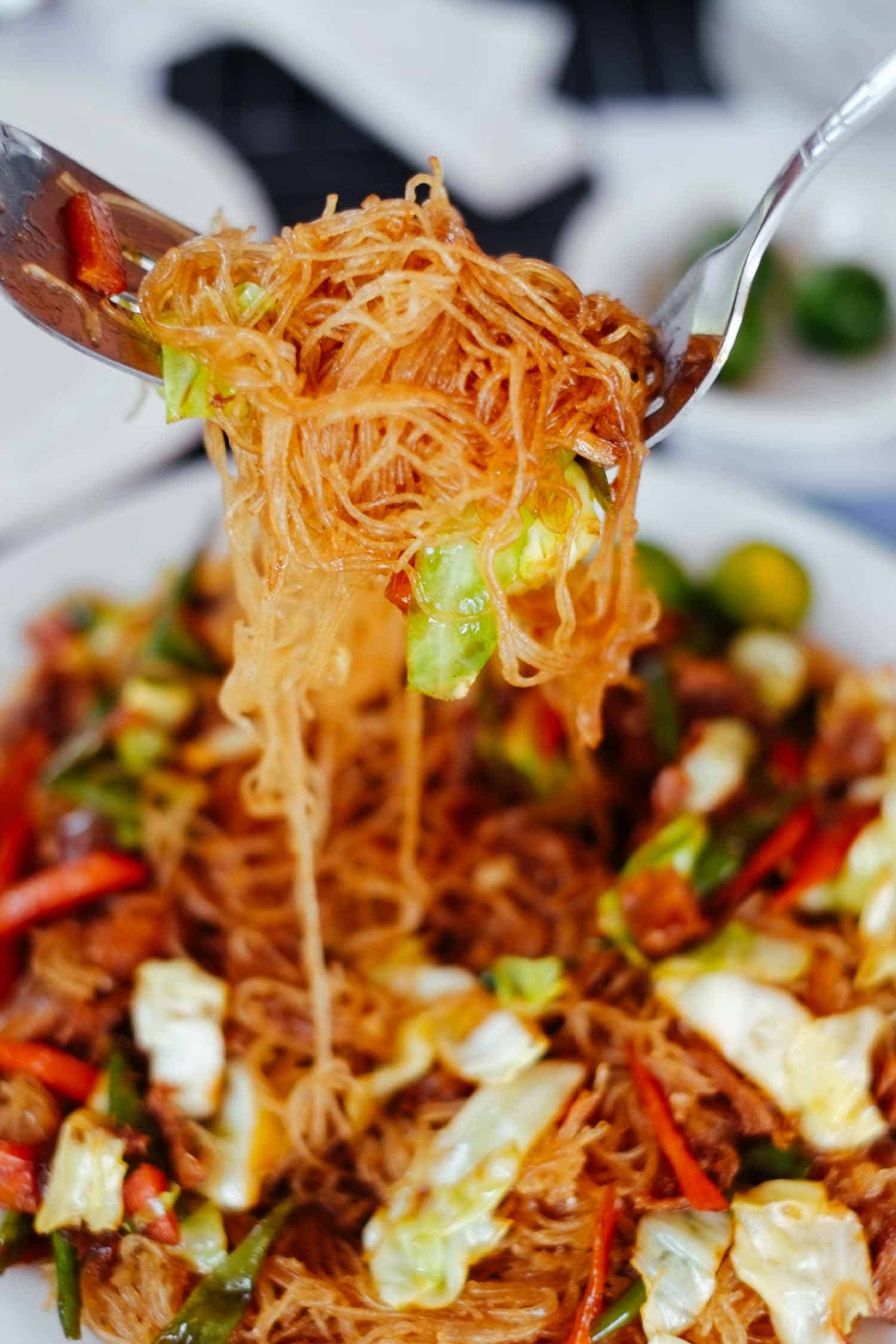
Pancit
Let me tell you, if I sat down to dinner and there was no rice on the table I knew there would be pancit.
But the truth is there is usually both.
The Chinese influence on Filipino food is evident in this dish. In fact, the word pancit originates from the Chinese term for noodles, ‘pian i cit’.
There are a huge range of pancit dishes across the country. Although I’ve only had them made with rice noodles, I heard in the Albay area they can also be made from seaweed.
I’d try it!
The common accompaniments for pancit can include fried shrimp, beef or pork rind. Thankfully there are almost always vegetables too.
Dinuguan
Most countries have individual ways of making the most of different parts of the animals. This is a stew that uses pork offal.
Although different parts of the animal can be included, this will commonly include lungs, kidneys, ears and even intestines. They are slow cooked in a gravy made with garlic, chili, vinegar and pig’s blood.
I know the idea of eating pig’s blood seems odd but if you’ve had morcilla or blood sausage you’ve already eaten it!
Don’t pass up this stew, which has a dark colour and rich, spicy taste. Not surprisingly it is commonly served with white rice.
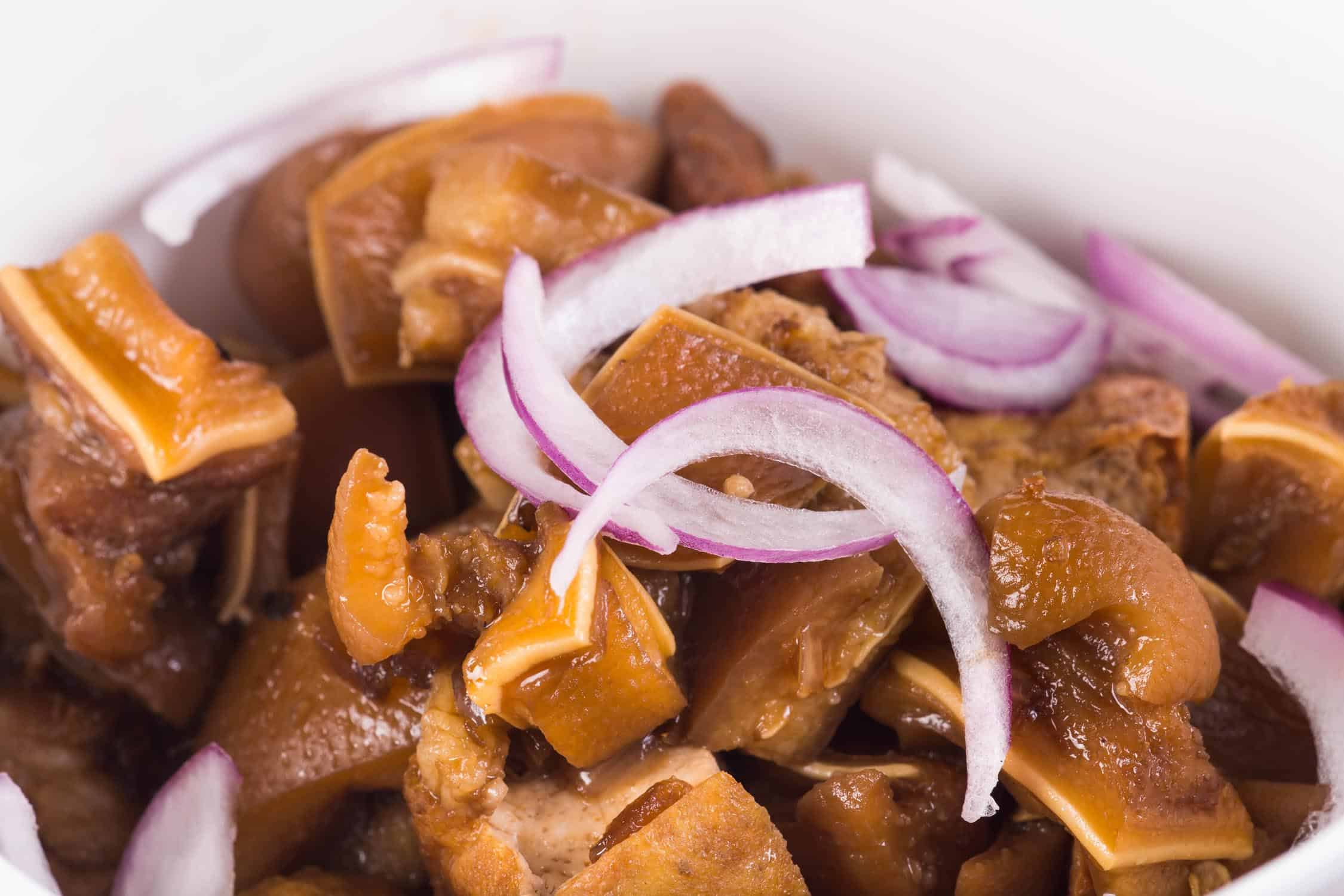
Tokwa’t Baboy
Tokwa’t baboy in English means pork and tofu. This Filipino food can be served as either a starter or as a main meal. If it’s the main dish it will be served alongside white rice or rice porridge.
It’s usually pork ears and belly, which are cut into small pieces and cooked in a broth made with soy sauce, vinegar, onions and red chilies.
Tofu is deep fried. It may be either be included with the pork in the sauce, or can be placed on top.
Sinangag
As with many of the traditional food in the Philippines, Sinangag developed as a way to use uneaten rice from the previous day.
Here the day-old rice has a firmer texture. It is stir-fried with garlic then seasoned with toasted garlic, salt and pepper.
This is a common component of a traditional breakfast in the country. Garlic fried rice served with a fried egg and fried slices of spam or other fried meats.
I’d take sinangag over blueberry pancakes any day.
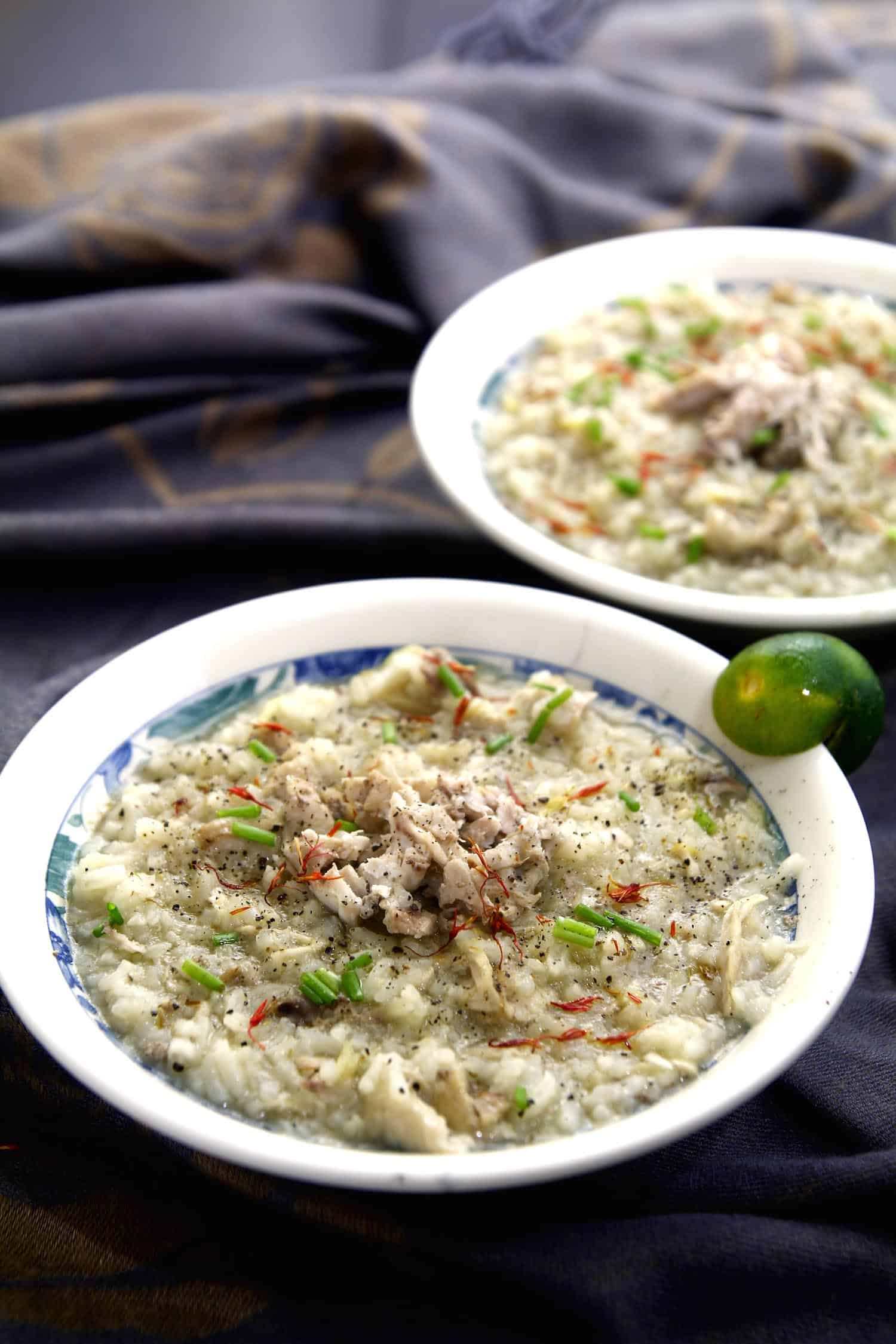
Arroz Caldo
A traditional comfort food in the Philippines that often fulfils a similar role to chicken soup for those who are feeling under the weather.
Arroz caldo is a warming soup or porridge made with rice.
The rice is cooked with chicken stock, fish sauce, ginger, onions and garlic to create a base, which is topped with several different ingredients.
Among the common toppings for arroz caldo are boiled eggs, spring onions and fried garlic.
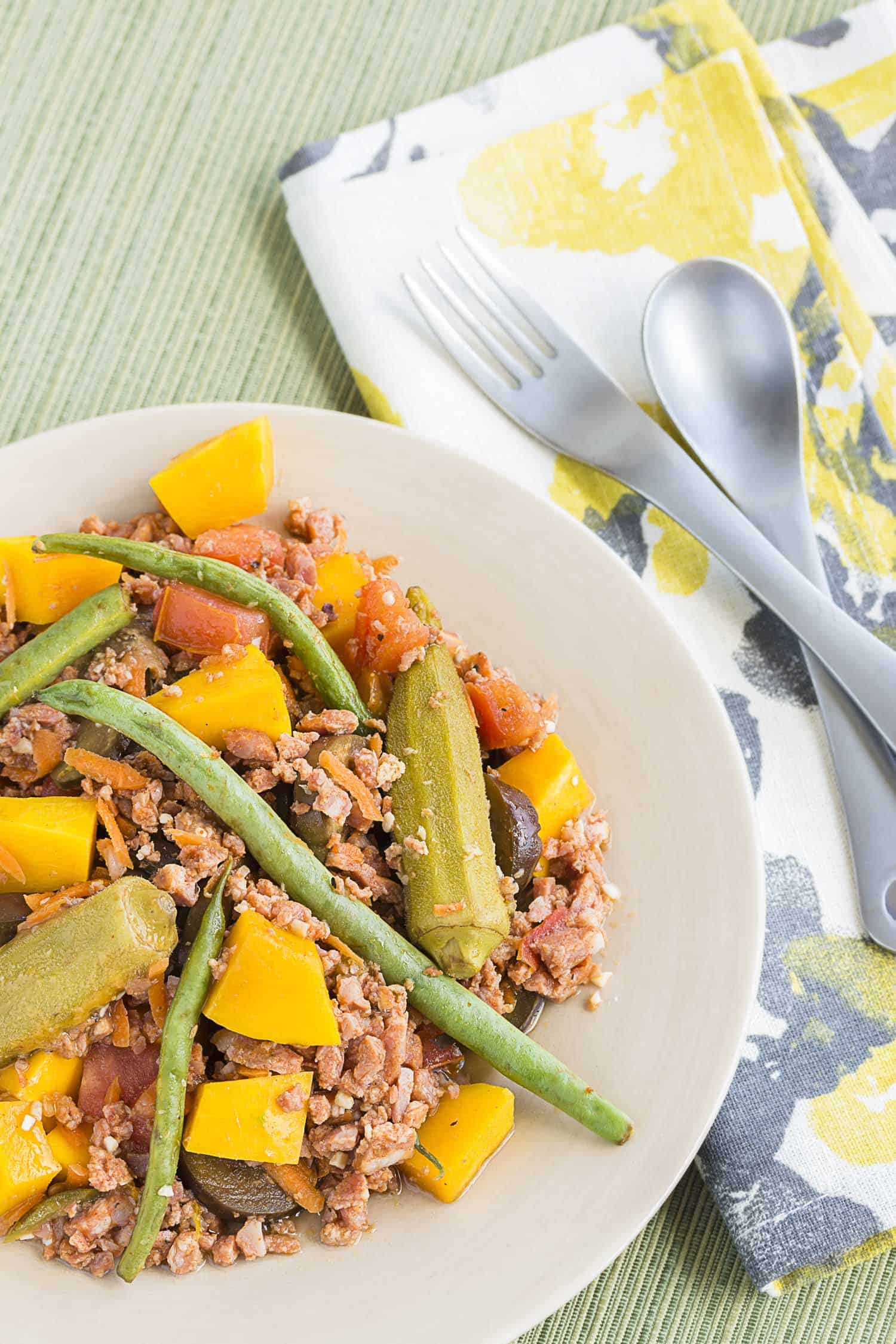
Pinakbet
Particularly popular in the Llocos region of the country, Pinakbet is also sometimes called pakbet.
It is an amazing way to eat a lot of vegetables even though it’s not a vegetarian dish.
The dish is made by cooking bitter melon, tomatoes, eggplant, string beans and chili peppers along with pork and shrimp.
These are cooked in oil and shrimp paste until they are almost dry and have absorbed all of the flavour, before being served.
The variety of ingredients tends to give this dish a very colourful appearance.
Bulalo
Another hearty soup dish that is perfect for the colder winter days, bulalo is prepared with beef and bone marrow which gives it a really rich deep flavour.
The beef and the bones are slow cooked with red onion, cabbage, bok choy, corn and fish sauce.
This is also sometimes served with a chili sauce, so that you can pick out some of the chunky ingredients in the soup, and dip them into the sauce.
Street Food In The Philippines
Balut
Perhaps the most infamous Filipino dishes of all time.
Originating in Chinese cuisine, most people exploring the Philippines will be a little alarmed when they see balut for the first time.
It is essentially a fertilized duck’s egg that has been boiled…but not fully cooked.
The eggs aren’t incubated by the duck, rather they are stored in the sun to develop. Before they are checked to ensure they are suitable for cooking.
The egg is then boiled and seasoned with salt, garlic, chili and vinegar, and offers a good combination of protein and calcium. This is often found in street food stalls in towns and cities in the country.
Lechon Manok
One of the most common dishes that you will find in Filipino street food is lechon manok.
It is essentially a spit roasted chicken that has been stuffed with lemongrass and it’s amazing. It somewhat reminds me of pollo a la brasa from Peru.
When ordered, the chicken is carved into slices on to a plate. And it’s served with a zesty sauce that is made with the local citrus fruit calamansi juice, combined with soy sauce and chili.
This is often served with white steamed rice or puso, a cake of rice that has been cooked in a pouch.
It is a popular South Cebu food and found on surrounding islands of Bantayan, Siquijor but my favorite was in Dumaguete.
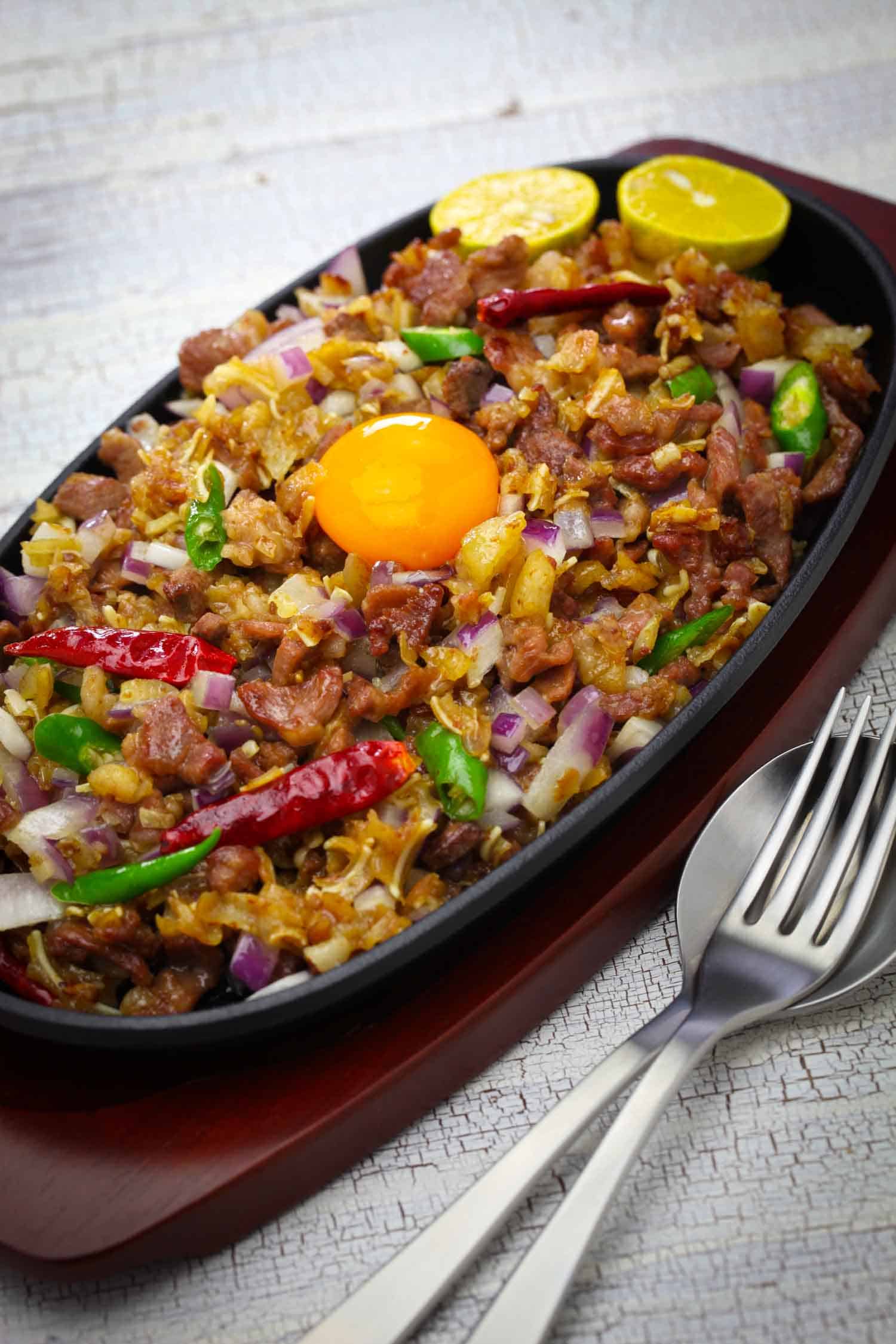
Sisig
Historical references to food in the Philippines aren’t common looking back through the centuries. But sisig is actually mentioned in a book from the 17th century in the Philippines.
It is a dish that is prepared with a pig’s head and chicken livers that are boiled and then grilled with a sour citrus sauce of calamansi and chilies.
When served in a restaurant it is often served on a hot sizzling plate.
It is particularly popular in Angeles City, which hosts an annual sisig festival in December each year.
Lumpiang Shanghai
As the name suggests, this dish takes an influence from Chinese cuisine. Also known as lumpia, oh how I love this spring roll.
They are stuffed with either pork, chicken or beef that has been combined with vegetables such as water chestnuts and carrots, and then seasoned with garlic and soy sauce.
The filling is then wrapped in a thin layer of pastry before being quickly fried, and they are usually served with a variety of dipping sauces.
Cheap and oh so tasty!
Isaw
There was a barbecue spot near my apartment in Cebu and I could never walk by without getting a few sticks of grilled isaw.
I actually had no idea what it was, but the smell was SO amazing.
One day I looked closely and realized it was intestines wrapped back and forth on a skewer. I wasn’t so keen on eating intestines at the time. But it was SO good so I just ignored it and kept eating it daily.
These skewers may be chicken or pig intestines. Don’t worry they are thoroughly washed and cleaned several times to ensure the meat is safe to cook and eat.
The intestines are dipped in a vinegar marinade before they are skewered. And they can either be placed immediately on to the grill, or in some areas will be boiled before they are placed on the grill to cook.
DO NOT MISS ISAW – still one of my favourite foods in the Philippines.
Palabok
This noodle dish is one of the most popular. It is basically a pancit noodle dish served in street food stalls, or even at home.
Noodles are topped with a range of different foods, but fish flakes, shrimp, pork and pork rinds are among the most common ingredients, along with vegetables.
The mixture is then cooked in a golden shrimp sauce, before it is ready to serve.
Filipino Desserts
Halo-halo
When it comes to the brightest desserts that you can find, this is THE dessert of the Philippines.
There is little around the world that can match the flash of bright colours that you will get with Halo-halo.
There are a range of different ingredients that can be used to prepare variants of this dessert. But the heart of the dessert is shaved ice and evaporated milk.
It’s topped with a scoop of ice cream and some mashed purple yam, which gives it a bright purple colour.
Depending on where you go there will also be tapioca pearls, agar jellies, jackfruit or plantains cooked in syrup.
Suman
These distinctive desserts will stand out as they are usually seen inside their wrapper. It is either a banana leaf or coconut leaf that has been used for steaming.
The mixture of glutinous rice and coconut milk is cooked within the leaf until it is soft and sweet. It is served sprinkled with sugar or latik – a type of coconut caramel.
Essentially a rice cake. There are many different varieties of suman. Suman may use cassava or shredded coconut, while using different leaves for the steaming.
All of these factor gives the dessert a slightly different flavour.
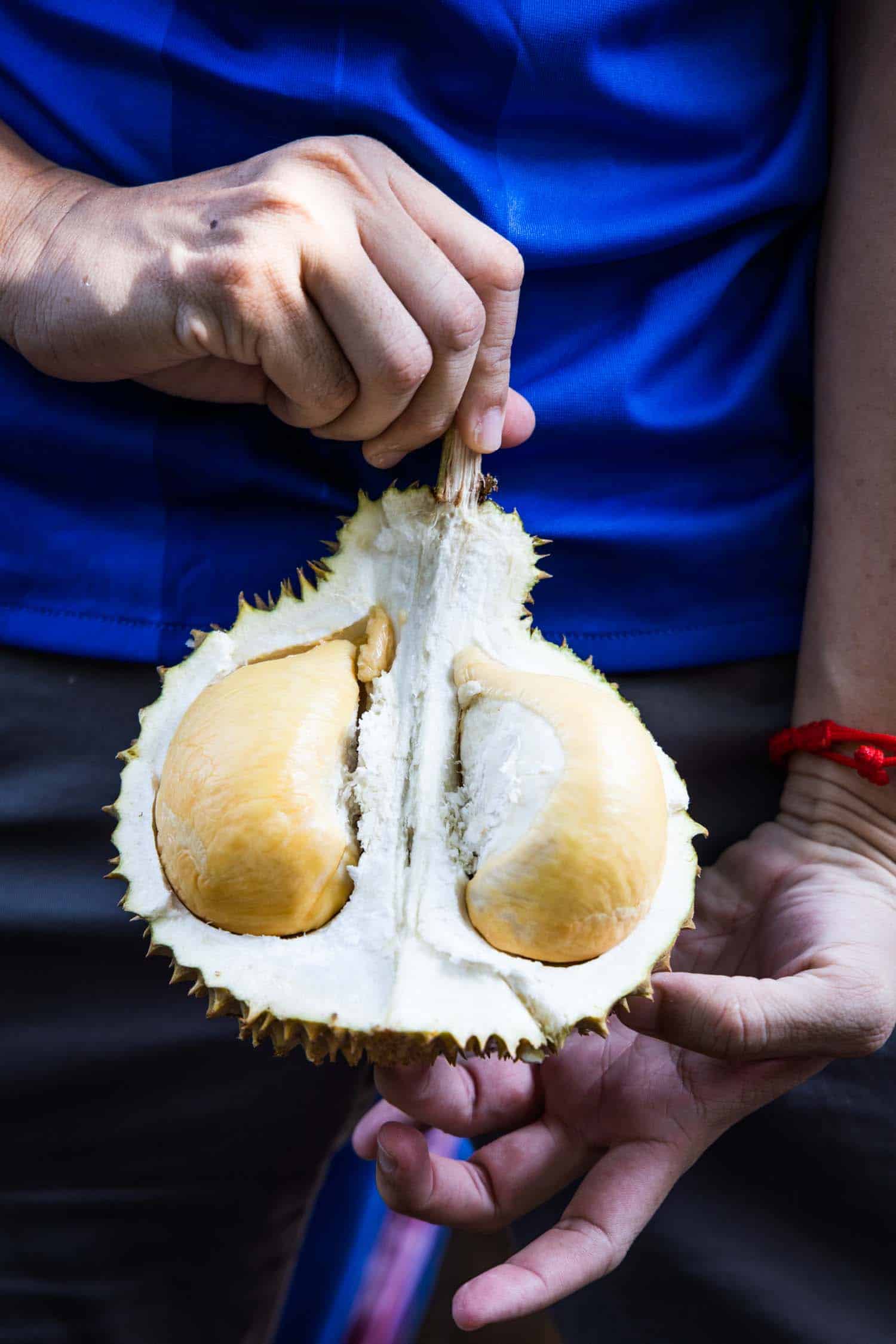
Durian
The most notorious exotic fruit in the Philippines.
Durian is both loved and hated. It has a delicious creamy custard flavour but also disgusting pungent smell.
There are actually signs all over the Philippines telling people they cannot enter with durian fruit as the smell is so terrible.
Exotic Fruits in the World
In the Philippines it is used as a filling for pies and pastries, a flavour for ice cream and in a range of other desserts.
Some like to eat it fresh, durian is very popular raw around Davao City on the island of Mindanao.
Leche Flan
Another legacy of the Spanish presence in the Philippines over the centuries is this tasty custard dessert that is known in Spain as Crème Caramel and in Cuba as flan Cubano.
This is essentially a thick custard made with egg yolks, condensed milk and evaporated milk that is then topped with a sweet caramel.
The dessert is steamed in individual ramekins with a layer of caramel beneath the custard itself until the custard has set.
It is flipped upside down on to a plate before it is ready to eat, and the caramel should start to seep around the edges of the flan.
Drinks In The Philippines
Salabat
While cold drinks are often the preferred option in the Philippines, salabat is a fresh ginger tea that naturally tends to become more popular during the winter months and used as a sore throat remedy.
This tea is an infusion of ginger that is prepared with honey and lemon juice. It is often served with a sweet rice cake..
Buko Juice
One of the most versatile ingredients in Filipino cuisine is the humble coconut.
While it’s commonly used for its flesh, an unripe green coconut also makes for great juice.
It is often served from many stalls in towns and cities. It is served fresh with the top chopped off to order and served with a straw. It’s also common to find in bottles as well.
A healthier option compared to sugary sodas, it contains a range of electrolytes and minerals.
Cocktails Around the World
Rum
One of the legacies of the colonial influence of Spain in the Philippines is that rum has become one of the more common alcoholic drinks.
There are many distilleries across the country.
The lighter rums produced are often used in cocktails and blended with mixers. However some darker aged rums are more commonly drunk neat, or with some ice or water.
Among the most common brands of rum found in the Philippines are Tanduay and Don Papa.
Yet you will also see plenty of other options available as well. It can be a very inexpensive drink.
Sago’t Gulaman
These colourful Filipino drinks are seen across the country. They are both sweet and have an interesting texture, because of this they have spread to many other parts of the world.
At the heart of the drinks are the chewy tapioca pearls that are soaked in water and softened, before being combined with sugar syrup, water and ice.
Similar to boba or bubble tea, sago’t gulaman are flavoured with many different ingredients, including grass jelly, milk or fruit juices.
These drinks are so vibrant and often appear to have layers of different colours in the glass.
Gin
The Philippines isn’t just rum!
There are some surveys that suggest that people in the Philippines drink more gin every year per capita than any other country in the world.
It is certainly found in every bar across the country.
There is a huge range of different gins available in the Philippines.
You can find artisanal spirits that have a unique flavour crafted from the huge range of botanicals found in the Philippines, through to those that are simply cheap and strong.
The biggest brand in the country is Ginebra San Miguel. It is commonly blended with a mixer, although some upmarket gins may be drunk neat.
Pin It: Food in the Philippines
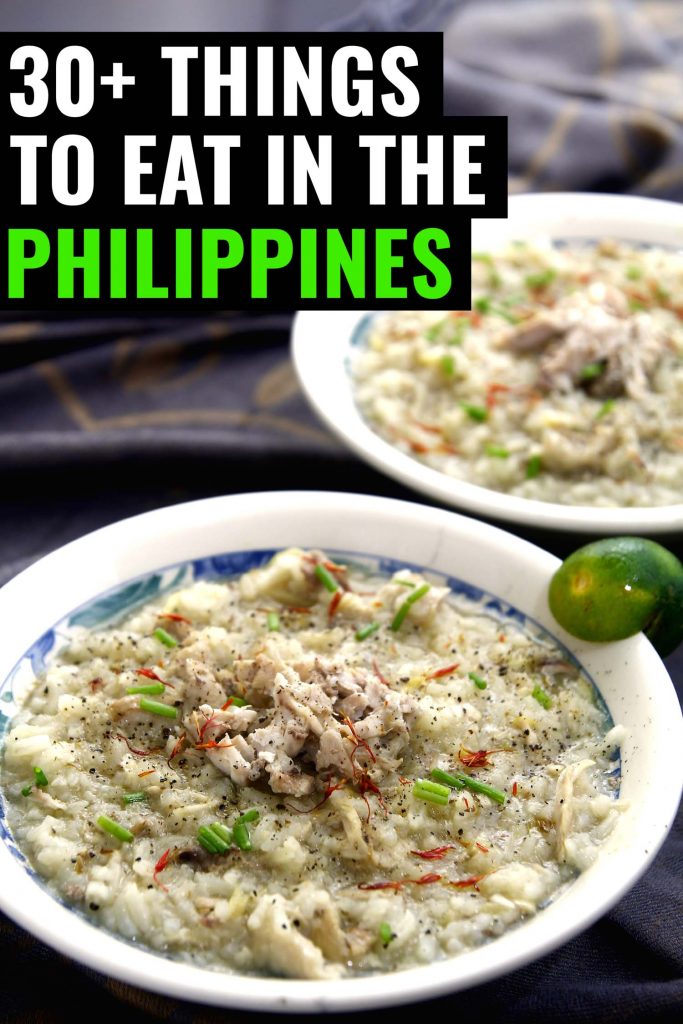
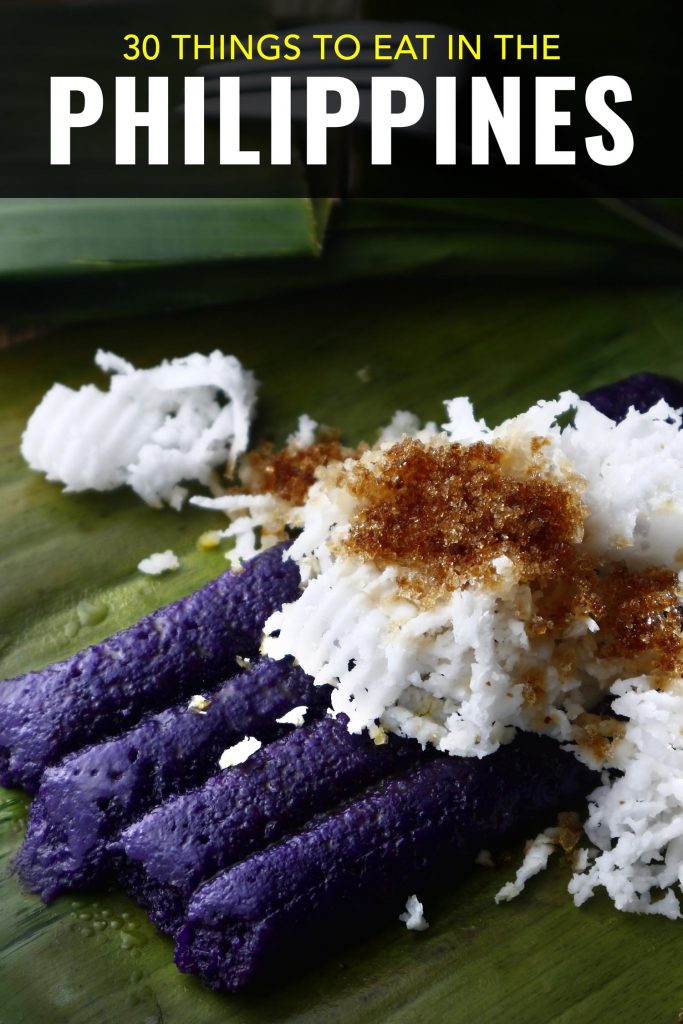

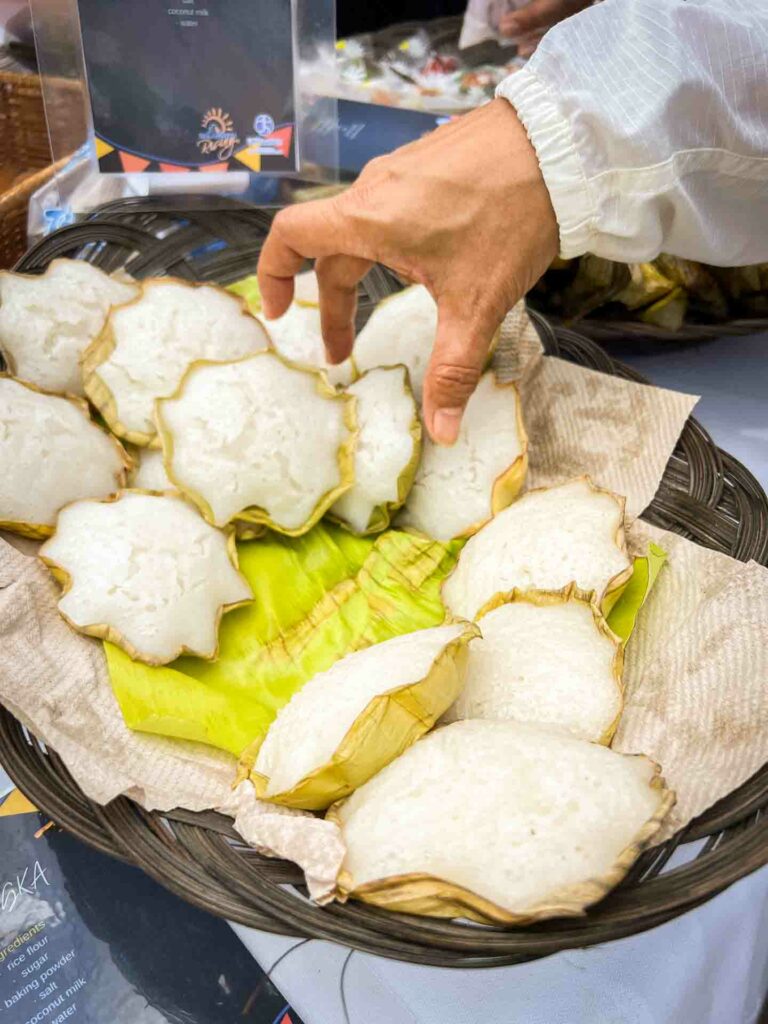
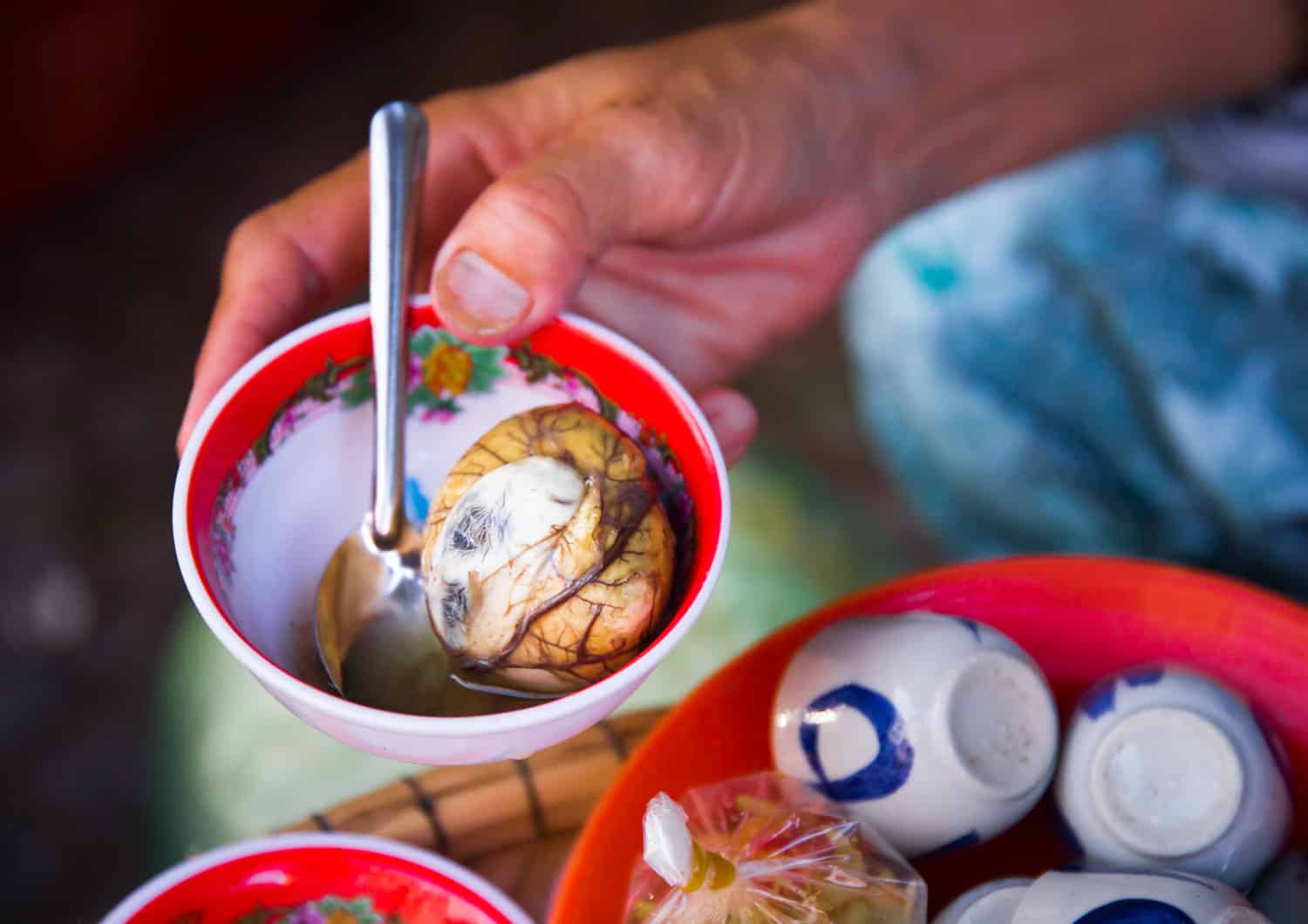
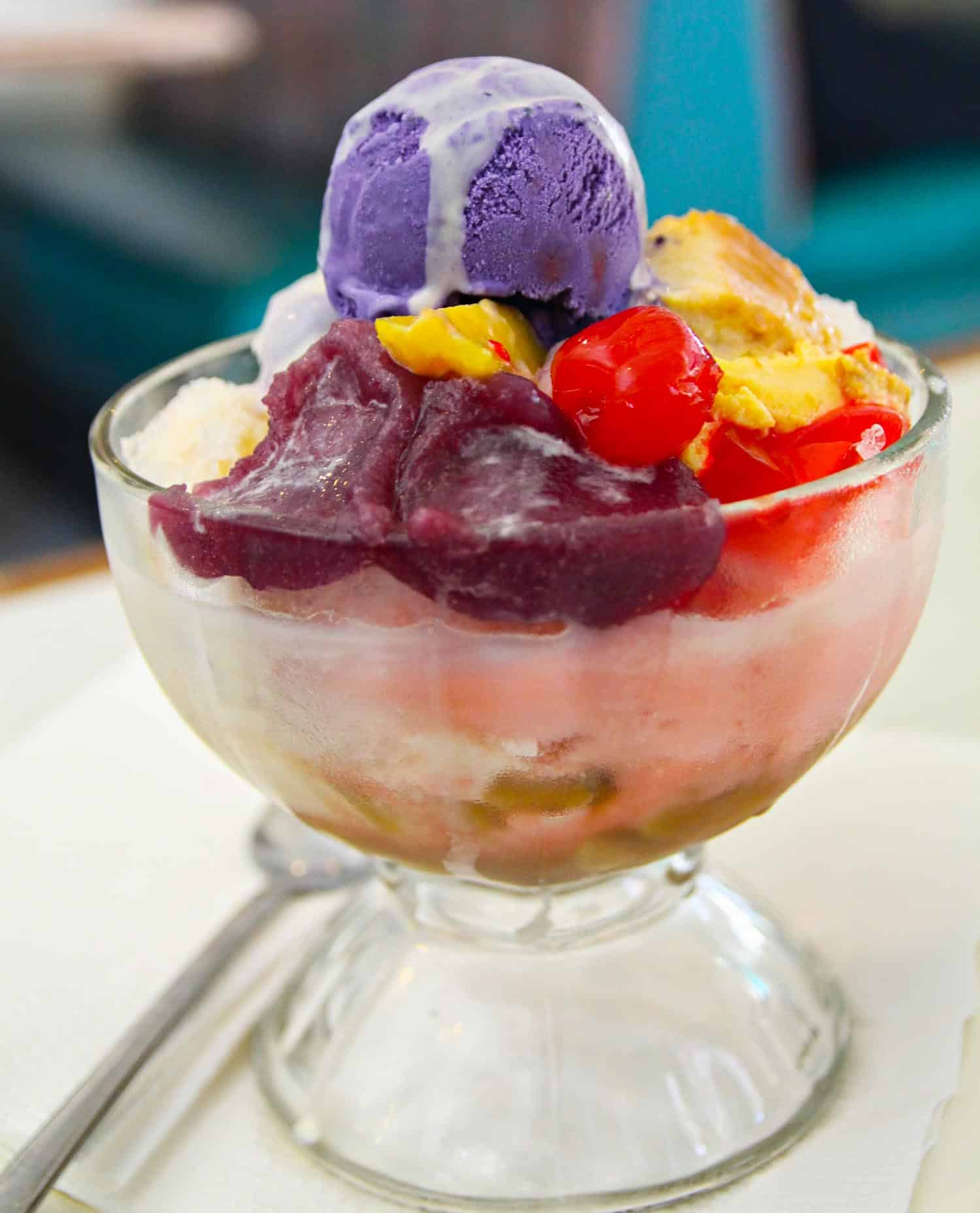

I am so jealous and upset at the same time! I recently went to the Philippines, but never got the opportunity to try food that I truly loved.
The next time that I visit the Philippines I really want to try visiting different locations and try local food and drinks.